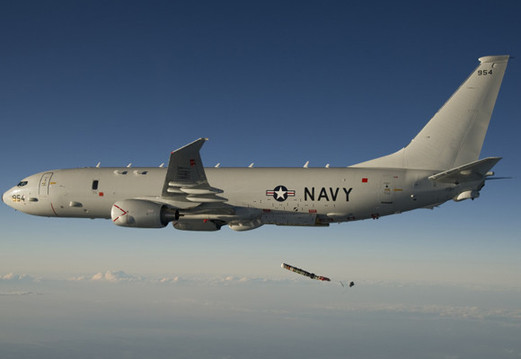P-8 won't contain China's rise
- By Shen Dingli
 0 Comment(s)
0 Comment(s) Print
Print E-mail China.org.cn, December 23, 2015
E-mail China.org.cn, December 23, 2015
|
|
|
Singapore has done America a service by permitting the deployment of the P-8s |
The United States and Singapore have struck a deal, allowing the U.S. P-8 Poseidon to base in Singapore so as to conveniently exercise its surveillance and reconnaissance flight missions over the South China Sea.
Assumedly, there are some benefits for the U.S. and Singapore to do so. On the part of the U.S., it saves money to send naval ships to the region and then use ship-based smaller spy planes to conduct their missions over the South China Sea. Singapore has done America a service by permitting the deployment of the P-8s, so it is far more economic.
The purpose of the U.S. doing so is to implement the so called "rebalancing" strategy, which is supposed to rebalance the new and rising forces in the Asia Pacific region and to restore the balance of power under the traditional leadership. The rebalance consists of two components - a military element to deploy some 60 percent of the U.S. global naval and air force assets to the region, and an economic dimension called the TPP, so not to allow rules including regional trade to be written by others.
Therefore, basing their P-8s in Singapore is part of the rebalancing strategy that Singapore has enjoyed and been cooperating with. By doing so, the Asia Pacific region, including the South China Sea, is expected to be quiet again, but still under the order of Pax Americana.
However, one might expect that this would bring more harm than good to the U.S. and Singapore. The reason is rather simple. With more P-8 espionage missions conducted in the region, there are greater chances of air collisions that make the U.S. lose its military technology, and put Singapore in a more awkward position to choose sides.
For instance, the collision on April 1, 2001 brought China rare opportunity to access the technology of the EP-3, which is not what the U.S. wanted, just like China didn't want to lose its own jet fighter and possibly their pilot. However, a collision still happened and the two countries still managed their relationship after a short while. However, the U.S. brought its military technology too close to China and had to manage the loss of its control.







Go to Forum >>0 Comment(s)